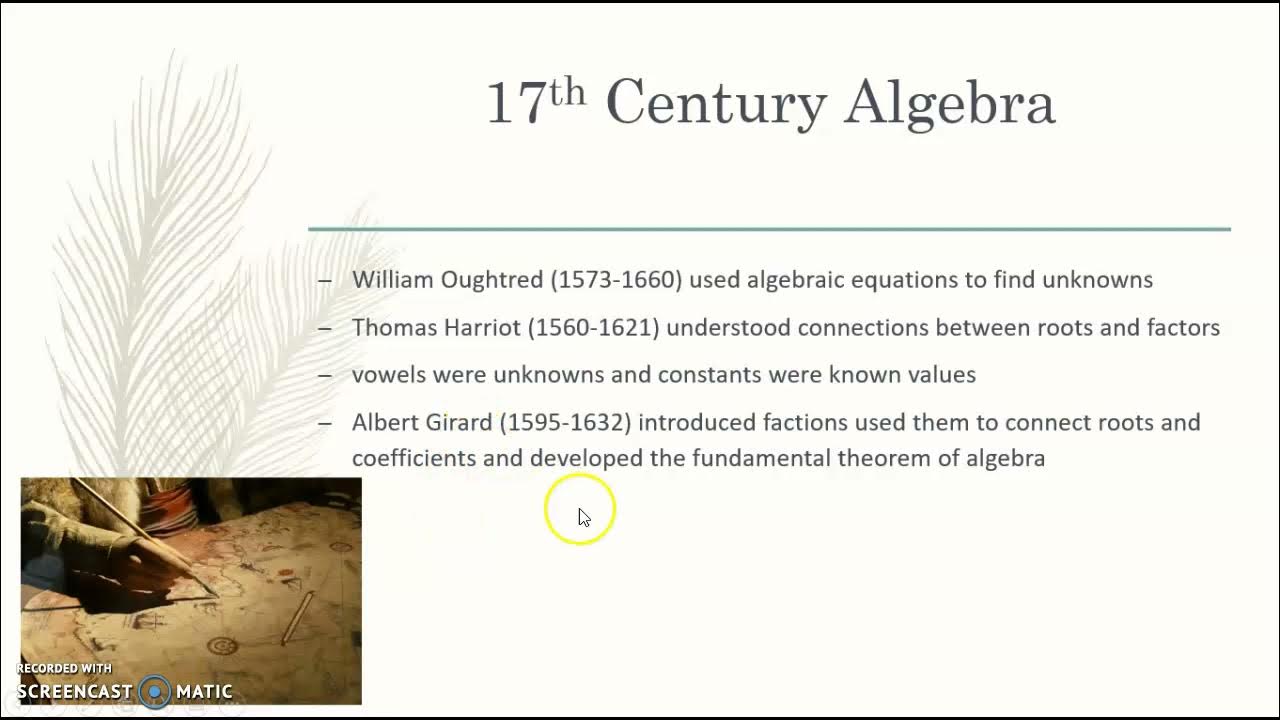100년 동안 풀리지 않았던 문제, 10분 만에 풀기 | 푸앵카레의 추측 | 세계7대난제
Summary
TLDRThis transcript explores the journey of mathematical discovery, highlighting the significance of the Poincaré Conjecture and the breakthroughs in understanding the universe's shape. The story delves into the history of mathematical challenges, like the famous Seven Bridges of Königsberg problem solved by Euler, and follows a Russian mathematician's rejection of a $1 million prize after solving one of the world's toughest problems. The video emphasizes the nature of mathematics, where problems drive progress, and ultimately addresses the notion of the universe’s possible shapes and dimensions, tying it all together with a tale of curiosity, intuition, and intellectual pursuit.
Takeaways
- 😀 In 2000, the Institute for Mathematical Research offered a $1 million prize for solving one of the seven famous unsolved mathematical problems.
- 😀 Within just three years, a Russian mathematician solved one of the problems but refused the prize, explaining that he was chasing the secrets of the universe, not money.
- 😀 The Institute was named after the 19th-century mathematician Henri Poincaré, who posed one of the most famous unsolved problems in mathematics.
- 😀 Poincaré's conjecture, one of the most difficult problems, questioned the shape of the universe, but it was difficult to even understand the problem itself, let alone solve it.
- 😀 Euler's famous 'seven bridges of Königsberg' puzzle demonstrated that the solution was impossible due to the nature of the graph (odd-degree nodes).
- 😀 Euler's breakthrough in the 'Seven Bridges' problem led to the creation of the concept of Eulerian paths and graphs, key principles in graph theory.
- 😀 The exploration of dimensions in mathematics showed that the universe's shape could be different from the way we perceive it in three-dimensional space.
- 😀 The world we live in is essentially a 2-dimensional surface (the Earth), but mathematical theories suggest other types of 2-dimensional spaces can exist.
- 😀 Higher dimensions were explored, such as in the example of a 3-dimensional space, where the universe could be thought of as a shape that could bend or transform.
- 😀 The Poincaré Conjecture was finally solved in 2003 by Russian mathematician Grigori Perelman, using Ricci flow equations, after 20 years of developments in mathematics.
Q & A
What was the significance of the $1 million prize offered by the Mathematics Institute in 2000?
-The $1 million prize was offered to solve one of the seven 'Millennium Prize Problems' in mathematics. These problems were considered some of the most challenging and unsolved mathematical puzzles of the time.
Why did the Russian mathematician refuse the $1 million prize after solving one of the problems?
-The mathematician refused the prize because, as he explained, he was focused on uncovering the secrets of the universe and could not be distracted by a monetary reward.
Who was Henri Poincaré, and why is his name significant in mathematics?
-Henri Poincaré was a renowned mathematician from the 19th century, known for his work in topology and chaos theory. His name is associated with the Poincaré Conjecture, one of the Millennium Prize Problems.
What was the Poincaré Conjecture, and why was it so difficult to prove?
-The Poincaré Conjecture posited that every simply connected, closed, 3-dimensional manifold is homeomorphic to a 3-dimensional sphere. It was difficult to prove because understanding the shape of the universe required highly complex mathematical concepts.
What did the mathematician aim to discover about the shape of the universe?
-The mathematician aimed to understand the shape of the universe, attempting to visualize and model it mathematically, even in terms of its possible topological structures.
What mathematical problem involved seven bridges, and who originally posed it?
-The Seven Bridges of Königsberg problem was posed by the citizens of Königsberg (now Kaliningrad). It asked whether it was possible to walk across all seven bridges without crossing any of them more than once.
What is Euler's solution to the Seven Bridges of Königsberg problem?
-Euler proved that it was impossible to walk across all seven bridges without crossing any of them more than once. His key insight was that in a graph, for a solution to exist, all vertices (points) must have an even number of edges, with at most two vertices having an odd number.
How did Euler simplify the Seven Bridges problem mathematically?
-Euler transformed the problem into a graph theory problem by representing bridges as edges and land areas as vertices. This allowed him to use mathematical principles to prove the impossibility of the task.
How did Euler’s work lead to the development of graph theory?
-Euler’s work on the Seven Bridges problem laid the foundation for graph theory, a branch of mathematics that studies graphs, which are mathematical structures used to model pairwise relations between objects.
What is the significance of different shapes or types of 2-dimensional spaces, as discussed in the script?
-The script explores the concept of 2-dimensional spaces by illustrating how different surfaces, like a sphere or a donut (torus), can be understood in terms of their topological properties. These concepts were crucial in understanding the Poincaré Conjecture and the nature of the universe's shape.
Outlines

Dieser Bereich ist nur für Premium-Benutzer verfügbar. Bitte führen Sie ein Upgrade durch, um auf diesen Abschnitt zuzugreifen.
Upgrade durchführenMindmap

Dieser Bereich ist nur für Premium-Benutzer verfügbar. Bitte führen Sie ein Upgrade durch, um auf diesen Abschnitt zuzugreifen.
Upgrade durchführenKeywords

Dieser Bereich ist nur für Premium-Benutzer verfügbar. Bitte führen Sie ein Upgrade durch, um auf diesen Abschnitt zuzugreifen.
Upgrade durchführenHighlights

Dieser Bereich ist nur für Premium-Benutzer verfügbar. Bitte führen Sie ein Upgrade durch, um auf diesen Abschnitt zuzugreifen.
Upgrade durchführenTranscripts

Dieser Bereich ist nur für Premium-Benutzer verfügbar. Bitte führen Sie ein Upgrade durch, um auf diesen Abschnitt zuzugreifen.
Upgrade durchführenWeitere ähnliche Videos ansehen
5.0 / 5 (0 votes)






